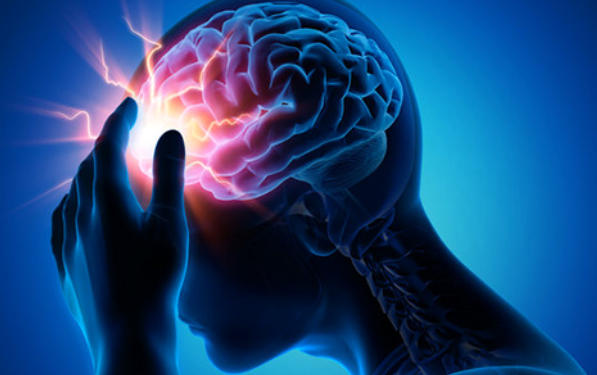Warning signs of a seizure
Seizures are sudden, uncontrolled electrical disturbances in the brain. They can cause changes in behavior, movements, feelings, and levels of consciousness. Recognizing the warning signs of a seizure is crucial, as early intervention can mitigate potential harm and provide timely medical assistance. This essay delves into the various warning signs of seizures, aiming to enhance awareness and understanding of this medical condition.

Understanding Seizures
Before exploring the warning signs, it’s essential to understand what seizures are. Seizures can be classified into two main categories: focal (partial) seizures and generalized seizures. Focal seizures originate in one part of the brain and may or may not cause a loss of consciousness. Generalized seizures affect both sides of the brain and typically result in a loss of consciousness. Each type has distinct warning signs, which will be discussed in detail.
Common Warning Signs of Seizures
1. Aura
An aura is often considered the first warning sign of a seizure. It is a subjective sensation experienced by the person before the actual seizure occurs. Auras can manifest in various forms, such as strange smells, tastes, feelings of déjà vu, or visual disturbances like flashing lights. Not everyone who has seizures experiences auras, but for those who do, it serves as a critical early warning sign.
2. Sudden Unresponsiveness
A sudden lapse in responsiveness is a hallmark sign of a seizure, particularly in generalized seizures like absence seizures. The individual may stare blankly into space, fail to respond to external stimuli, or appear to be daydreaming. This state can last for a few seconds to a couple of minutes and often goes unnoticed, especially in children.
3. Muscle Stiffness and Jerking
Muscle stiffness, also known as tonic activity, can be a precursor to a seizure. This is typically followed by rhythmic jerking movements, known as clonic activity. These symptoms are characteristic of tonic-clonic seizures (formerly known as grand mal seizures). During a tonic phase, the person’s muscles contract and stiffen, often causing them to fall. This is followed by the clonic phase, where the muscles undergo rapid, rhythmic contractions and relaxations.
4. Confusion and Disorientation
Postictal confusion, occurring after the seizure, can also serve as a warning sign of an ongoing seizure disorder. Individuals may exhibit disorientation, confusion, or memory loss immediately following a seizure. This phase can last from a few minutes to several hours, depending on the severity and type of seizure experienced.
5. Sudden Mood Changes
Abrupt changes in mood or behavior can be indicative of an impending seizure. This might include sudden episodes of fear, anxiety, anger, or euphoria without an apparent cause. These emotional changes are often associated with focal seizures, particularly those originating in the temporal lobe of the brain.
6. Unusual Sensations
Seizures can sometimes be preceded by unusual sensations in different parts of the body. These sensations can range from tingling or numbness to more complex phenomena like a sensation of floating or detachment from the body. These sensory warnings are commonly reported in focal seizures.
Specific Warning Signs by Seizure Type
1. Focal Seizures
- Focal Aware Seizures: Also known as simple partial seizures, these do not involve a loss of consciousness. Warning signs include jerking of a limb, a sudden change in sensory perception (e.g., hearing, taste), and emotional alterations.
- Focal Impaired Awareness Seizures: Previously called complex partial seizures, these involve a change or loss in consciousness. Warning signs include automatisms (repetitive movements like lip-smacking or hand-clapping), staring spells, and altered awareness of the surroundings.
2. Generalized Seizures
- Absence Seizures: Common in children, these seizures involve brief, sudden lapses in attention. Warning signs include rapid blinking, chewing movements, or slight twitching of the face.
- Tonic-Clonic Seizures: These are the most dramatic form of seizures and involve a combination of muscle stiffness and jerking. Warning signs include a sudden cry or groan, loss of consciousness, and rhythmic convulsions.
- Myoclonic Seizures: These are brief, shock-like jerks of a muscle or a group of muscles. Warning signs include sudden muscle jerks that may occur in clusters, typically affecting the upper body.
- Atonic Seizures: Also known as drop attacks, these involve a sudden loss of muscle tone, leading to falls. Warning signs include sudden head drops or falls without any preceding trigger.
Recognizing and Responding to Seizures
Understanding the warning signs is just the first step. It is equally important to know how to respond when someone is experiencing a seizure. Here are some key steps:
- Stay Calm: Keeping calm helps you provide better assistance. Panicking can worsen the situation for both you and the individual having the seizure.
- Ensure Safety: Remove any dangerous objects from the vicinity to prevent injury. Gently guide the person to the ground if they are standing.
- Do Not Restrain: Never try to hold the person down or restrain their movements. This can cause injury.
- Time the Seizure: If possible, note the duration of the seizure. This information is crucial for medical professionals.
- Positioning: Turn the person onto their side to prevent choking, especially if there is saliva or vomit.
- Stay With Them: Remain with the individual until they are fully conscious and aware of their surroundings.
- Seek Medical Help: If the seizure lasts longer than five minutes, or if multiple seizures occur without full recovery in between, call emergency services immediately.
Conclusion
Seizures are complex neurological events that can present with a variety of warning signs. Recognizing these signs can be life-saving, allowing for timely intervention and support. From auras and sudden unresponsiveness to muscle jerking and emotional changes, the spectrum of warning signs is broad and varied. By understanding these signs and knowing how to respond, we can better support individuals with seizure disorders and help them manage their condition more effectively. Awareness and education are key components in improving the quality of life for those affected by seizures.


